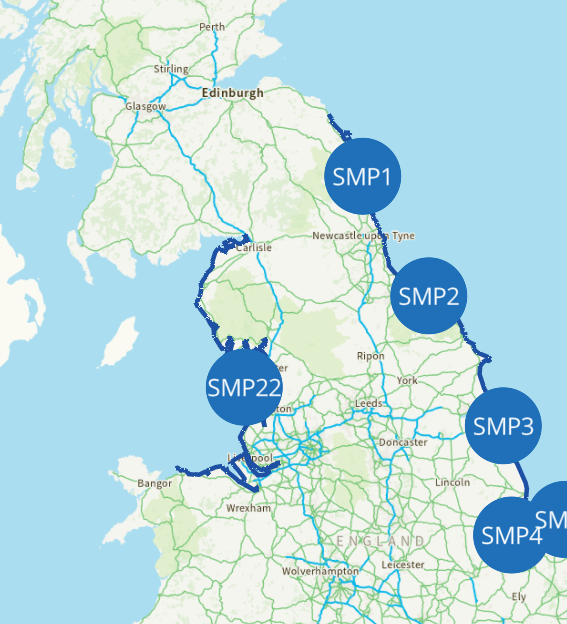Embracing the ‘boring’ side of AI and automation to unlock efficiencies
The UK government continues to face substantial delivery and productivity challenges as it responds to current events on an ever-tightening budget. Increasingly, AI and automation can play a role in simplifying and streamlining government processes while creating high-scale services for customers and colleagues, says Mark Jennings, Client Group Managing Director, Health & Public Service UK and Ireland at Accenture.
Large scale automation is playing an important and “exciting” role in the streamlining of fragmented processes in government organisations, Jennings tells Government Transformation Magazine. “This is an area that can have a really strong impact for our clients as it works by tying together those practical problems a lot of departments face, such as ageing legacy systems, with the aspiration to provide better services.”
In 2022, Accenture worked with the Department for Work and Pensions (DWP) to scale its Intelligent Automation Garage (IAG) as a way of better serving the department’s 20 million claimants and customers each year. DWP launched the IAG in 2017 to deploy digital technology, including robotic process automation and chatbots, deep learning and machine learning, that would automate routine tasks, increase productivity, and improve decision making.
Jennings describes the project as a “poster child for large scale automation” due to the substantial long-term savings and efficiencies that were achieved - around £54 million in the four years since the IAG was launched.
due to the substantial long-term savings and efficiencies that were achieved - around £54 million in the four years since the IAG was launched.
The department has since benefited from an additional green perk - having saved 1,796 trees through its reduction in paper.
“The level of transparency you start to get in the business is key here. You can see exactly what a robot has done, exactly what those processes have been and you can then start to optimise the benefits very carefully. It’s really, really insightful work," Jennings says.
Keeping up with citizen engagement
New technologies in AI and automation also offer a way for public services to be delivered differently to reflect shifting citizen requirements. In an increasingly digital world, citizen expectations around public services have changed - as has the kind of relationship they are looking for with government.
“Citizens today are seeking a much more personalised interaction service - chat being a prime example. Unfortunately, that is not where a lot of the UK Government is at right now,” Jennings says.
There is a huge opportunity for government agencies to drive more efficiency in chat services. Many large transactional departments are still using a primarily telephony channel, supported by an online presence where users can fill out basic forms. Furthermore, if you look at the challenges some departments have around peak demand and seasonal demand - a clear example being tax returns - incentivising scalable digital channels for that contact would be transformational.
“A lot of contact with government departments is often nugatory. However, if departments can move further upstream to try and avoid them, they can drive away a lot of that unnecessary contact,” Jennings says.
The next iteration of GOV.UK will be about supporting two way messaging and building AI tools into how the chat function works in order to ensure that there are appropriately facilitated channels for the vast majority of citizens, Jennings says. “Taking an end-to-end system of thinking around citizen contact and system communication can drive huge savings and efficiencies for government organisations.”
The word on everybody’s lips right now is ChatGBT, but in Jennings’ view; while this technology is a “game changer” it is not likely to be found at the top of the agenda for government organisations in the short-term. “There is an application challenge here. You wouldn't use ChatGPT to provide advice on your taxes because it might be wrong and you can't risk giving people incorrect information. Unless it's 100% correct, then you can't use this as a platform.”
Where it does offer a glimmer of potential is in its ability to understand intent. “Where it is really impressive is around citizen communication and how we can modernise contact. That ability to understand what they want, no matter how they ask it - that improved sentiment analysis - is where I see a lot of potential for open AI in government.”
It starts with ‘boring' AI
Taking a step back, Jennings stresses how the pressing needs of government are “far more front of mind” for most civil servants “than the art of the possible” and “what might come next.”
“While there's a lot of talk about AI, there’s actually very little in government. The real opportunity is what I call boring AI," he says.
This looks at AI in the back office, where it can be used to analyse emailing, routing inbound communications to the appropriate departments and to reduce time spent on processing applications.
“Only once you've really digitised everything and you've got some consistency across your systems, can you begin to use AI for those more exciting processes - spotting patterns that might be used for fraud analytics, or driving yield in taxation.”







